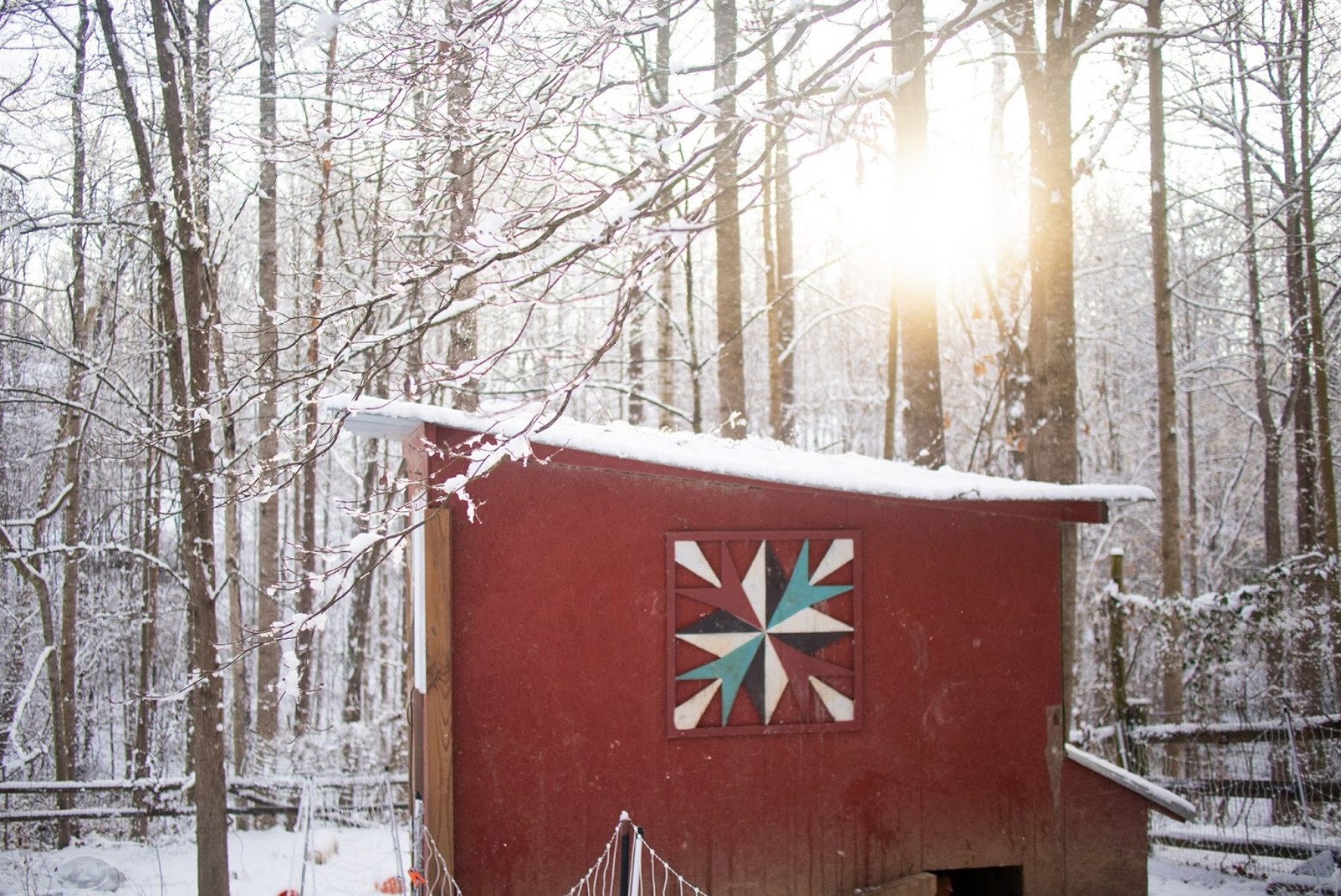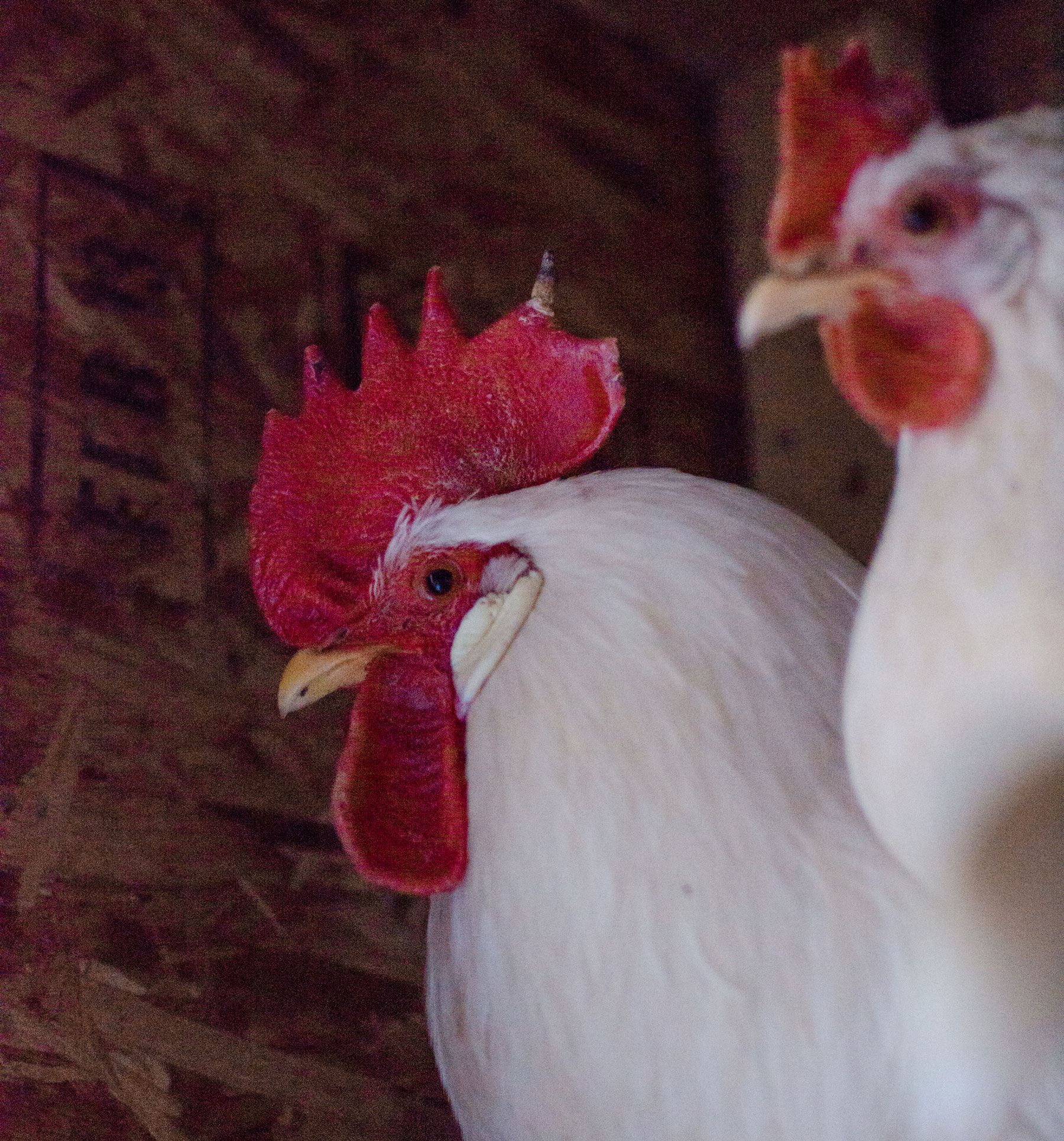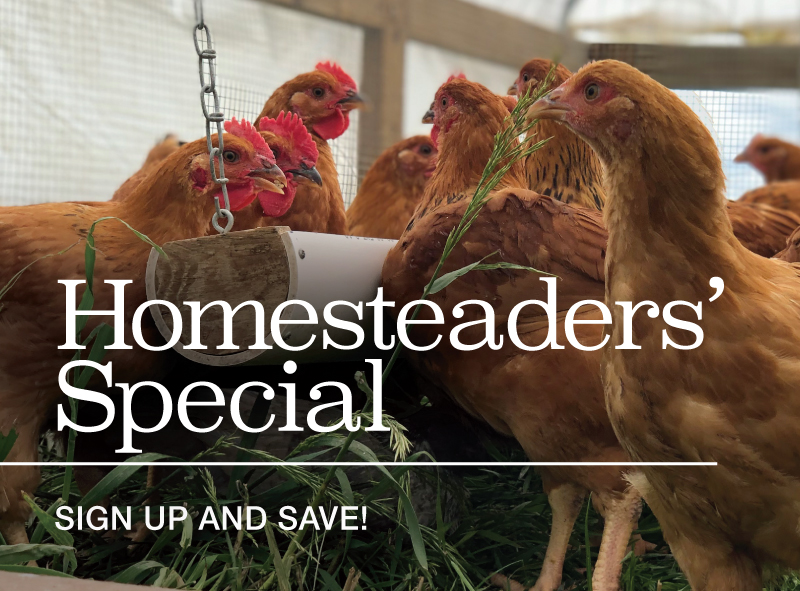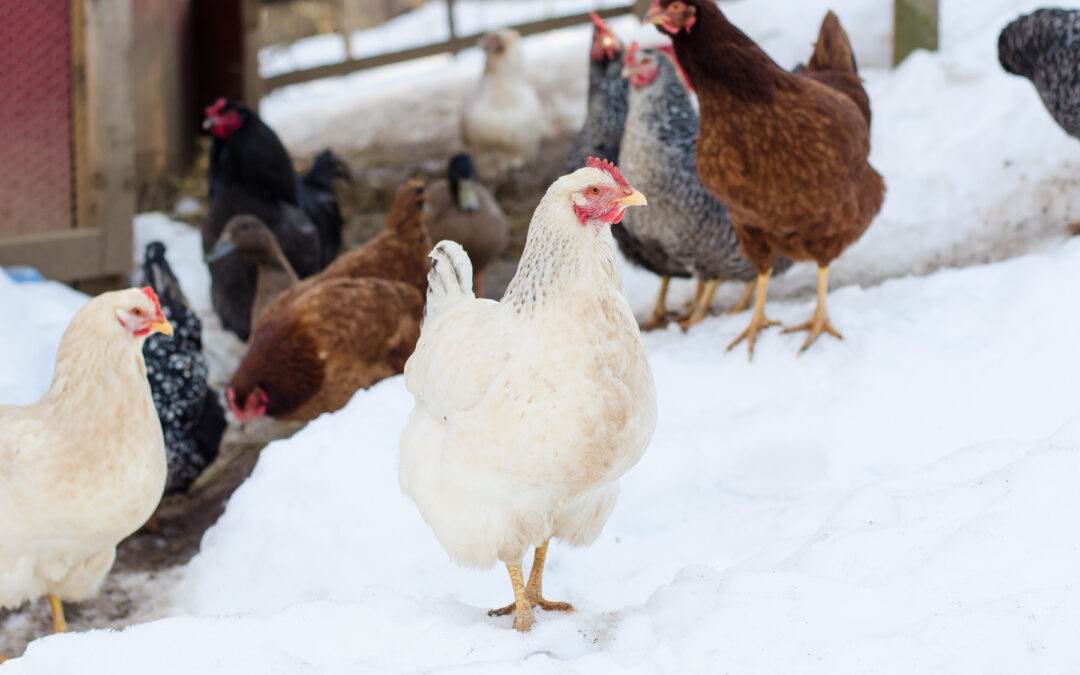Winter is here and I need to think about the things to do to start preparing my chicken coop and chickens for their winter chicken coop set up. Wait, what? I have a winter set up and check list for my chickens? Why yes, yes I do! And it might be something you should consider too! Actually, you should totally prepare for this before winter comes. But oftentimes, you’re like me, and you procrastinate until it actually needs doing. Welcome to real life chicken keeping.
There are some general things you should do when preparing your chooks and coop for winter. A winter chicken coop isn’t much different than any other season, but there are a few things to consider. We’ll talk about all of it in this blog post, as well as some things we do on our personal homestead that you might consider doing. We’ll even talk about using a chicken coop heater and the deep litter method, which can both be controversial topics, but I’ll break it down for you in an unbiased way!
How to Use the Deep Litter Method for Chickens in Winter
If you’ve had chickens for any amount of time, you’ve probably heard or read about “deep litter”. This isn’t a new method, by any means. In fact, it’s something that farmers and homesteaders have been using for centuries.
Deep litter can be implemented in both your chicken coop and your chicken run. It is accomplished by adding an organic material — like straw, pine shavings, wood chips, or even leaves — to the flooring in your coop or chicken run. Each day, you’ll stir the bedding, and if necessary, add more bedding as it begins to break down.
If done properly, a winter chicken coop won’t need to be heated or cleaned out until spring time when using the deep litter method for chickens. You can even throw scratch grains and feed onto the bedding each day and have the chickens do the stirring work for you!
As you continue to add layers of bedding, the bedding under the top layer begins to break down, much in the same way as organic material in nature. This also generates a natural heat to help take the chill off during those extra cold nights.
We do this with wood chips in our chicken run, as well. Winter months can bring a lot of yucky wet weather, and therefore, a lot of mud. Wet chicken runs are a breeding ground for parasites, and that’s not something we want with chickens. We combat this by laying wood chips in the run and throwing out scratch grains and whole grains that our chickens can forage for in the bedding. It keeps parasites at bay, keeps our chicken’s feet warm (since the bedding generates slight heat), and even allows grains to sprout.
Once you’re ready to clean your coop out, you can simply throw the deep litter in a separate composting area, or put it on your garden (before spring comes) and let it do it’s “dirty” work … in a good way!
The deep bedding in your chicken run doesn’t need to be cleaned out and will break down naturally. We actually like to do deep bedding in our run all year long.

Do They Need a Chicken Coop Heater?
It’s tempting to place a heating element (such as a heat lamp) in your winter chicken coop during the harshest winter nights, but it’s really not necessary in most cases.
Chickens do a really good job at keeping warm all on their own. In fact, the years I have tried using a heat lamp, we had more issues in the coop, and with our chickens, than when we didn’t use one. We prepare for winter by making sure our coops are draft free, but still have air flow. The deep litter also ensures a little extra heat in the coop, which is natural.
There are, however, some exceptions. Sometimes you can use a heat source outside of your coop, or in your chicken run, so that your birds can get warm throughout the day. This may be especially true in frostbite situations, especially with the birds’ feet.
If you have a hurt, disabled, or sick chicken, a heat source for that individual bird is a definite necessity. Heat can do amazing things for the healing process of a chicken.
We don’t use a heat lamp at all unless it’s for chicks or a sick or injured bird. But it’s really your preference!
Another thing we don’t do in the winter is place waterers in the coop, because this can cause excessive moisture, ice crystals, and ice on the floor. The only time we place water in the coop is with excessive snowfall. We’ve had a chicken or two not use their beautiful little brains and decide to take a bath in the waterer before bedtime! Talk about frozen toes and feathers!
You can also feed scratch grains or whole or cracked corn before roosting time. This keeps your chicken’s body heat going during the digestive process throughout the evening.
Ultimately, if you prepare accordingly, your chickens will huddle together and generate their very own, perfectly adequate heat. Birds were created to do this. Think of the wild birds that stay behind in the winter months. They make it through all weather and seasons. In fact, chickens have an advantage, because they have us as caretakers!

Protecting Chickens from Frostbite
Sometimes, no matter what steps you take, chickens can get frostbite on their combs, wattles, or toes. You’ll notice black specks on combs and wattles first. This normally implies frostbite. A little frostbite is fine, it doesn’t hurt your chickens at all. Frostbite on toes seems to be a bigger issue when you have constantly wet or snowy weather during the winter. You’ll notice your chicken’s feet will become very red in color, and sometimes they will start to turn gray. Once they turn black, the frostbite has done its damage and there’s really no way to save the toes. Sounds harsh, right?
We have had chickens lose tips of combs, but one year we had a freak incident where a rooster lost the tip of his toe. Not necessarily from the frostbite itself. But from himself and the other chickens pecking at the frostbite on his toe. You can prevent this cannibalism and curiosity from happening with a simple salve or ointment.
When chicken frostbite does become more than just a speck here or there, you may consider making a black drawing salve to help protect your chicken’s areas that are most susceptible to frostbite. You can learn more about how to treat and prevent frostbite in chickens (including the salve recipe) on my website here.
Other Winter Chicken Coop Preparations
Our coop is an 8×8 coop with a tin roof. It’s one of the best places to be when it’s raining outside—rain on a tin roof. In the summertime we have a door on it with wire (and only wire). But in the winter months, we have to put in our winter chicken coop door so that the wind doesn’t blow on the birds. We created a door that is easy to change out with the wire door. It is plexiglass so that sunlight can beam into the coop and heat it up during the day. And also, the chickens get an ample amount of sunlight to continue laying through the winter months. You can see the winter chicken coop door in the photo below.
Another thing we like to do to prepare for winter in the chicken coop and with our chickens — stock up on chicken feed. You never know when the next feed shortage or winter storm will arrive. This is really something that every chicken keeper should do all year long. Make sure you have a space (like in galvanized bins) that is rodent free. You’ll never regret keeping extra feed on hand, especially when you have more snow than you realized, and chickens eating more feed than you originally prepared for!
I also give extra straw to my chickens in their nesting boxes this time of year. They tend to like to sit in there and get comfy. And, if ever their feet begin getting too cold, they hop up in the boxes and get warmed up before heading back out again.

As you prepare your coop and chickens for winter time, make sure you prep for things that you and your livestock actually need. Just because one chicken keeper needs one thing, doesn’t mean you will! But these general steps and methods can help you keep your chickens happy, healthy, and safe this winter!
Ultimately, as long as your chickens are healthy, safe, in a draft free coop, and have a mostly dry chicken run, you’re good to go for the winter!

NEW Homesteader’s Special Available in 2020 from McMurray Hatchery
McMurray Hatchery is proud to partner with Homesteaders across the country, and support more sustainable lifestyles, by offering our new
Homesteaders’ Special. Our Homesteaders’ Special makes it easier to raise your own flock for meat and eggs:
- Register as a Homesteader by calling (800) 456-3280
- Purchase a minimum of 350 birds per year
- Choose your savings: 20% OFF OR 60-DAY TERMS!
Photos courtesy of Amy Fewell.


